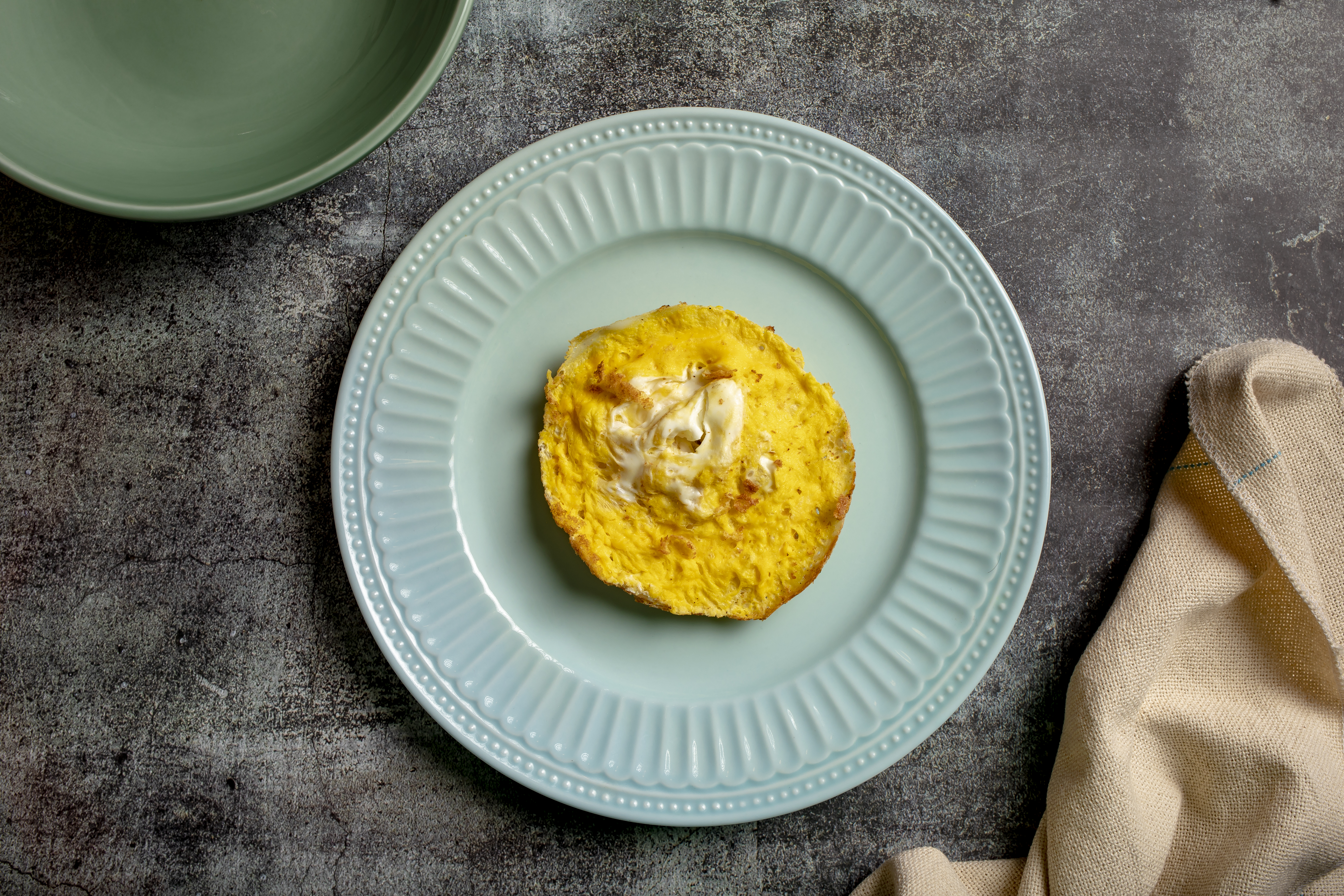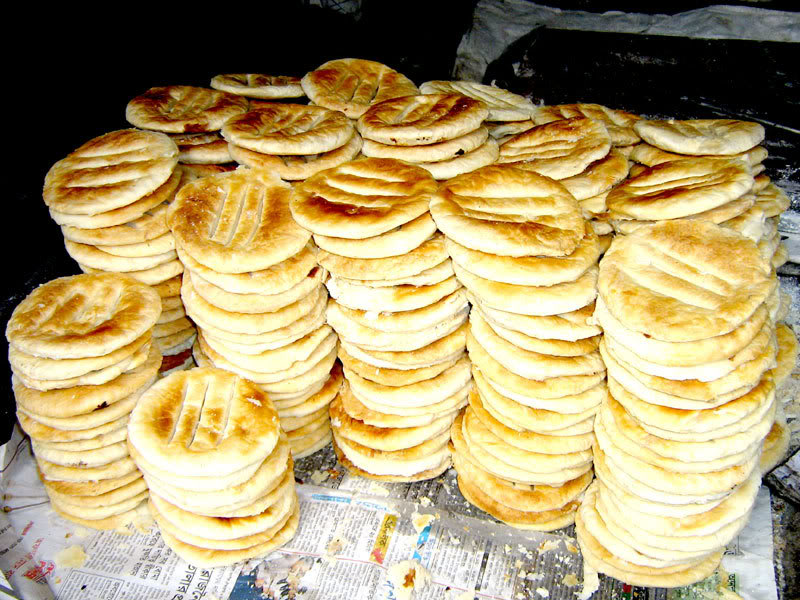|
Chitai Pitha
Ashke Pithe () or Chitoi Pitha () is one of the most popular rice cakes in Bangladesh and West Bengal of India. It is also known as Dhaka Pithe, Chikui Pithe and Sora Pithe. Perhaps, the current spelling for 'Axse', has come in the form of ashke or aske because of local use. It is a somewhat looked like the south Indian Idli. At the time of Makar Sankranti, Paush Sankranti, the Ashke pithe is prepared. The Ashke pithe is usually eaten with Molasses, but it is eaten with lentils, peas, fish curry of Koi fish and even meat curry. Historian Tapan Roychoudhury compared the Ashke pithe to the Beefsteak. History The customs of making this rice-cake in the house of Bengalis, Bengali in various religious festivals has come from the Middle Ages. Preparation The main ingredient for the Ashke pithe is half seasoned rice powder. Other ingredients are water, salt, and some amounts of corn oil. In the preparation for Ashke Pitha, it is usually used a special type of soil lid and to cover ... [...More Info...] [...Related Items...] OR: [Wikipedia] [Google] [Baidu] |
Bangladesh
Bangladesh, officially the People's Republic of Bangladesh, is a country in South Asia. It is the List of countries and dependencies by population, eighth-most populous country in the world and among the List of countries and dependencies by population density, most densely populated with a population of over 171 million within an area of . Bangladesh shares land borders with India to the north, west, and east, and Myanmar to the southeast. It has a coastline along the Bay of Bengal to its south and is separated from Bhutan and Nepal by the Siliguri Corridor, and from China by the List of Indian states, Indian state of Sikkim to its north. Dhaka, the capital and list of cities and towns in Bangladesh, largest city, is the nation's political, financial, and cultural centre. Chittagong is the second-largest city and the busiest port of the country. The territory of modern Bangladesh was a stronghold of many List of Buddhist kingdoms and empires, Buddhist and List of Hindu empir ... [...More Info...] [...Related Items...] OR: [Wikipedia] [Google] [Baidu] |
Middle Ages
In the history of Europe, the Middle Ages or medieval period lasted approximately from the 5th to the late 15th centuries, similarly to the post-classical period of global history. It began with the fall of the Western Roman Empire and transitioned into the Renaissance and the Age of Discovery. The Middle Ages is the middle period of the three traditional divisions of Western history: classical antiquity, the medieval period, and the modern period. The medieval period is itself subdivided into the Early, High, and Late Middle Ages. Population decline, counterurbanisation, the collapse of centralised authority, invasions, and mass migrations of tribes, which had begun in late antiquity, continued into the Early Middle Ages. The large-scale movements of the Migration Period, including various Germanic peoples, formed new kingdoms in what remained of the Western Roman Empire. In the 7th century, North Africa and the Middle East—once part of the Byzantine Empire� ... [...More Info...] [...Related Items...] OR: [Wikipedia] [Google] [Baidu] |
Bengali Cuisine
Bengali cuisine is the culinary style of Bengal, that comprises Bangladesh and the Indian state of West Bengal, and Assam's Karimganj district. The cuisine has been shaped by the region's diverse history of Bengal, history and climate. It is known for its varied use of flavours including mustard oil, as well as the spread of its confectioneries and desserts. There is a strong emphasis on rice as a staple, with fish traditionally the most common protein. Freshwater fish are preferred to seafish, although barramundi, known as ''bhetki'', is also common. Meat is also a common protein among Bengalis, with chicken and mutton being the most popular. Beef is popular within the Muslim community. In more recent times, lentils have begun to form a significant part of the diet. Many Bengali food traditions draw from religious and social functioms, such as Adda (South Asian), adda, Poila Boishakh, Eid-al-fitr, Eid, and Durga Puja. Culinary influences Mughal influence Muslims conquered Beng ... [...More Info...] [...Related Items...] OR: [Wikipedia] [Google] [Baidu] |
Bangladeshi Cuisine
Bangladeshi cuisine has been shaped by the region's history and river-line geography. Bangladesh has a tropical monsoon climate. The staple foods of Bangladesh are rice and fish. The majority of Bangladeshi people are ethnic Bengali, with a minority of non-Bengalis, many used to cuisines from different traditions and regions. History Bangladeshi culinary habits were strongly influenced by the cuisine and culture of the area's history of Mughal rulers. Dhaka was the Mughal capital of the Bengal Subah and a major trading center in South Asia. Traders, immigrants and visitors brought culinary styles from around the world, which influenced the city's cuisine. After Dhaka became the capital of East Bengal, Persian, Turkish and Arabic-influenced dishes became popular. Black pepper and '' chui jhal'' were used to add spiciness before chili was introduced from the Americas. Culinary style and influences Rice is the staple food of Bangladesh, while fish is the most common source ... [...More Info...] [...Related Items...] OR: [Wikipedia] [Google] [Baidu] |
Soru Chakli
Soru may refer to: * Renato Soru, an Italian internet entrepreneur * Sõru, village in Hiiumaa Parish, Hiiu County, Estonia * Soru, Azerbaijan, municipality in Lerik District Lerik District () is one of the 66 districts of Azerbaijan. It is located in the southeast of the country and belongs to the Lankaran-Astara Economic Region. The district borders the districts of Yardimli, Masally, Lankaran, Astara and the Ar ..., Azerbaijan * Soru, Nepal, rural municipality in Karnali province, Nepal See also * Ab Soru, a village in Iran * Saru Castles * Sors, Azerbaijan {{Disambiguation, geo, surname ... [...More Info...] [...Related Items...] OR: [Wikipedia] [Google] [Baidu] |
Pottery
Pottery is the process and the products of forming vessels and other objects with clay and other raw materials, which are fired at high temperatures to give them a hard and durable form. The place where such wares are made by a ''potter'' is also called a ''pottery'' (plural ''potteries''). The definition of ''pottery'', used by the ASTM International, is "all fired ceramic wares that contain clay when formed, except technical, structural, and refractory products". End applications include tableware, ceramic art, decorative ware, toilet, sanitary ware, and in technology and industry such as Insulator (electricity), electrical insulators and laboratory ware. In art history and archaeology, especially of ancient and prehistoric periods, pottery often means only vessels, and sculpture, sculpted figurines of the same material are called terracottas. Pottery is one of the Timeline of historic inventions, oldest human inventions, originating before the Neolithic, Neolithic period, w ... [...More Info...] [...Related Items...] OR: [Wikipedia] [Google] [Baidu] |
Aluminum
Aluminium (or aluminum in North American English) is a chemical element; it has chemical symbol, symbol Al and atomic number 13. It has a density lower than that of other common metals, about one-third that of steel. Aluminium has a great affinity towards oxygen, passivation (chemistry), forming a protective layer of aluminium oxide, oxide on the surface when exposed to air. It visually resembles silver, both in its color and in its great ability to reflect light. It is soft, magnetism, nonmagnetic, and ductility, ductile. It has one stable isotope, 27Al, which is highly abundant, making aluminium the abundance of the chemical elements, 12th-most abundant element in the universe. The radioactive decay, radioactivity of aluminium-26, 26Al leads to it being used in radiometric dating. Chemically, aluminium is a post-transition metal in the boron group; as is common for the group, aluminium forms compounds primarily in the +3 oxidation state. The aluminium cation Al3+ ... [...More Info...] [...Related Items...] OR: [Wikipedia] [Google] [Baidu] |
Brass
Brass is an alloy of copper and zinc, in proportions which can be varied to achieve different colours and mechanical, electrical, acoustic and chemical properties, but copper typically has the larger proportion, generally copper and zinc. In use since prehistoric times, it is a substitutional alloy: atoms of the two constituents may replace each other within the same crystal structure. Brass is similar to bronze, a copper alloy that contains tin instead of zinc. Both bronze and brass may include small proportions of a range of other Chemical element, elements including arsenic, lead, phosphorus, aluminium, manganese and silicon. Historically, the distinction between the two alloys has been less consistent and clear, and increasingly museums use the more general term "list of copper alloys, copper alloy". Brass has long been a popular material for its bright gold-like appearance and is still used for drawer pulls and door handle, doorknobs. It has also been widely used to ma ... [...More Info...] [...Related Items...] OR: [Wikipedia] [Google] [Baidu] |
Soil
Soil, also commonly referred to as earth, is a mixture of organic matter, minerals, gases, water, and organisms that together support the life of plants and soil organisms. Some scientific definitions distinguish dirt from ''soil'' by restricting the former term specifically to displaced soil. Soil consists of a solid collection of minerals and organic matter (the soil matrix), as well as a porous phase that holds gases (the soil atmosphere) and water (the soil solution). Accordingly, soil is a three- state system of solids, liquids, and gases. Soil is a product of several factors: the influence of climate, relief (elevation, orientation, and slope of terrain), organisms, and the soil's parent materials (original minerals) interacting over time. It continually undergoes development by way of numerous physical, chemical and biological processes, which include weathering with associated erosion. Given its complexity and strong internal connectedness, soil ecologists ... [...More Info...] [...Related Items...] OR: [Wikipedia] [Google] [Baidu] |
Bengalis
Bengalis ( ), also rendered as endonym and exonym, endonym Bangalee, are an Indo-Aryan peoples, Indo-Aryan ethnolinguistic group originating from and culturally affiliated with the Bengal region of South Asia. The current population is divided between the sovereign country Bangladesh and the India, Indian regions of West Bengal, Tripura, Barak Valley of Assam, Andaman and Nicobar Islands, and parts of Meghalaya, Manipur and Jharkhand. Most speak Bengali language, Bengali, a classical languages of India, classical language from the Indo-Aryan languages, Indo-Aryan language family. Bengalis are the List of contemporary ethnic groups, third-largest ethnic group in the world, after the Han Chinese and Arabs. They are the largest ethnic group within the Indo-European languages, Indo–European linguistic family and the largest ethnic group in South Asia. Apart from Bangladesh and the Indian states of West Bengal, Tripura, Manipur, and Assam's Barak Valley, Bengali-majority popula ... [...More Info...] [...Related Items...] OR: [Wikipedia] [Google] [Baidu] |





